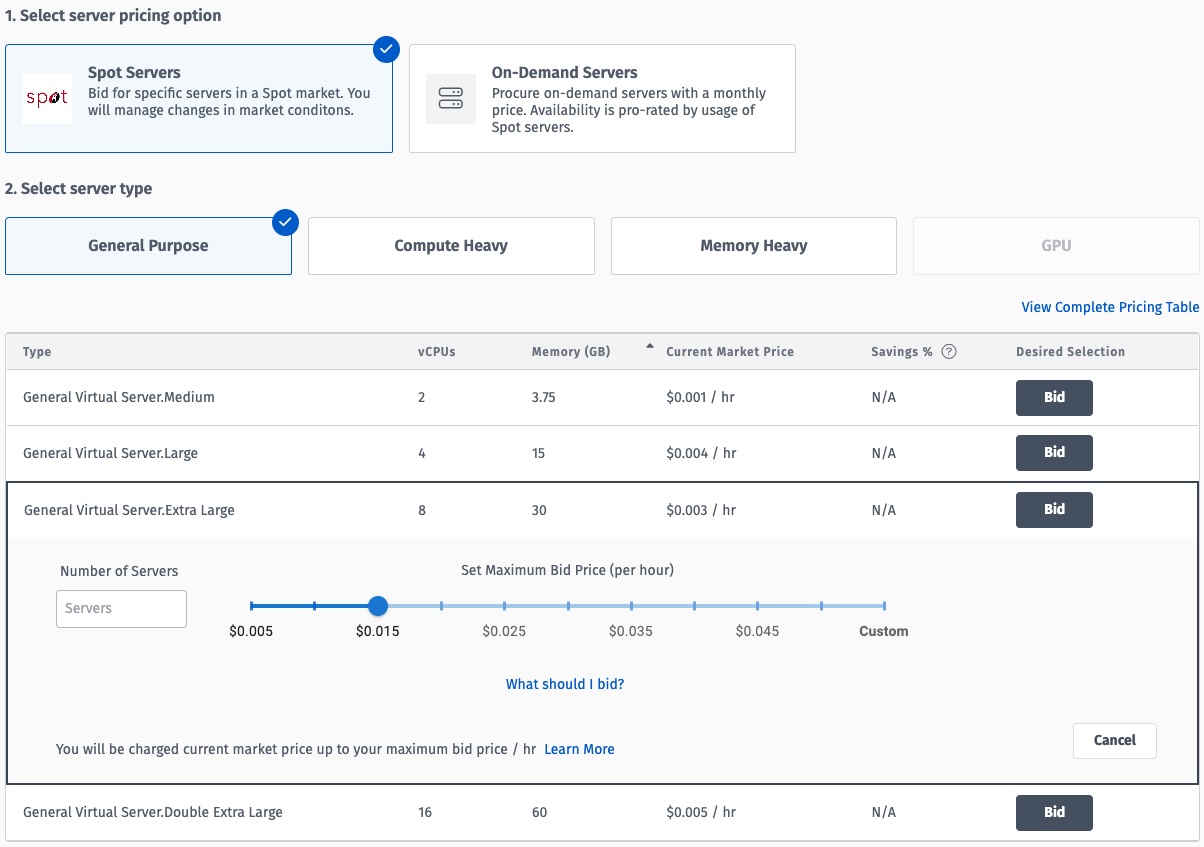This document outlines recommended best practices when bidding for server capacity.

1. Understand You Pay the Market Price, Not Your Bid
This is the most crucial concept: Your Maximum Bid Price is just a ceiling. You are only charged the current, lower Market Price for the instance type as long as that market price is at or below your bid.
- Example: If you bid $0.10/hour, but the market price is currently $0.02/hour, you will be charged $0.02/hour. You only risk pre-emption if the market price rises above $0.10/hour.
- Benefit: Setting a higher bid doesn't necessarily mean you pay more per hour; it primarily increases your instances' resilience against market price fluctuations.
2. Using the Bid Slider
The bid slider makes it easy and visual to see your available bid options, starting from the current market price.

The bid slider helps you visualize the 10 nearest bid prices
By default, the bid slider defaults to two bid increments above the current market price. This is a price at which you are very likely to win servers. If you would like to retain the servers for a longer period of time without pre-emption, consider choosing the mid-way or higher points on the slider. Alternatively, you should look deeper into market capacity trends using our available capacity and price insights tools.
3. Use Capacity and Price Insights to Inform Your Bid
Using capacity and price insights will allow you to make the most informed bids. To do this, click on "What should I bid?" under the bid slider, and click on 'Bid by capacity availability'.

- Lower Risk Starting Point: To minimize the initial risk of pre-emption, consider setting your maximum bid at or slightly above the price associated with 80% capacity availability for your chosen instance type and region.





4. Balance Cost Savings vs. Pre-emption Risk
Your ideal bid depends on your specific needs:
- Maximum Savings (Higher Risk): Bidding closer to the current market price or lower percentiles (e.g., 50%) offers greater potential savings but significantly increases the likelihood of pre-emption if the market price rises.
- Lower Pre-emption Risk (Potentially Lower Savings): Bidding significantly higher (well above the 80th percentile) reduces the chance of pre-emption due to price increases but might lead to paying a slightly higher market price if the market remains stable far below your bid (though still cheaper than On-Demand).
Choose a bid strategy that matches your workload's tolerance for interruption.
5. Consider Instance Flexibility
If your workload is flexible, consider if it can run on multiple different instance types (e.g., gp.vs1.large, ch.vs1.large). Check the capacity insights for several suitable types. You might find one type has a more stable market or lower prices than another, allowing you to bid more effectively.
6. Remember to Plan for Pre-emption Handling
While smart bidding reduces the frequency of pre-emption, it doesn't eliminate the possibility. Refer back to the Pre-emption Explained for strategies.